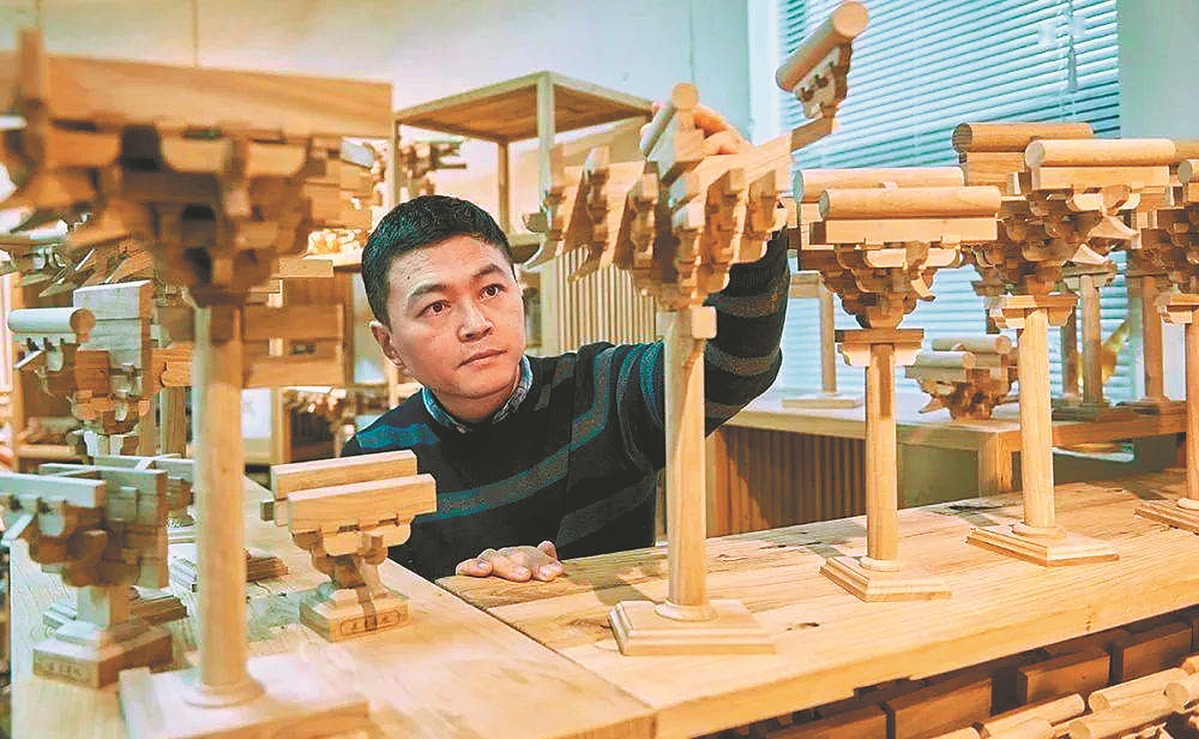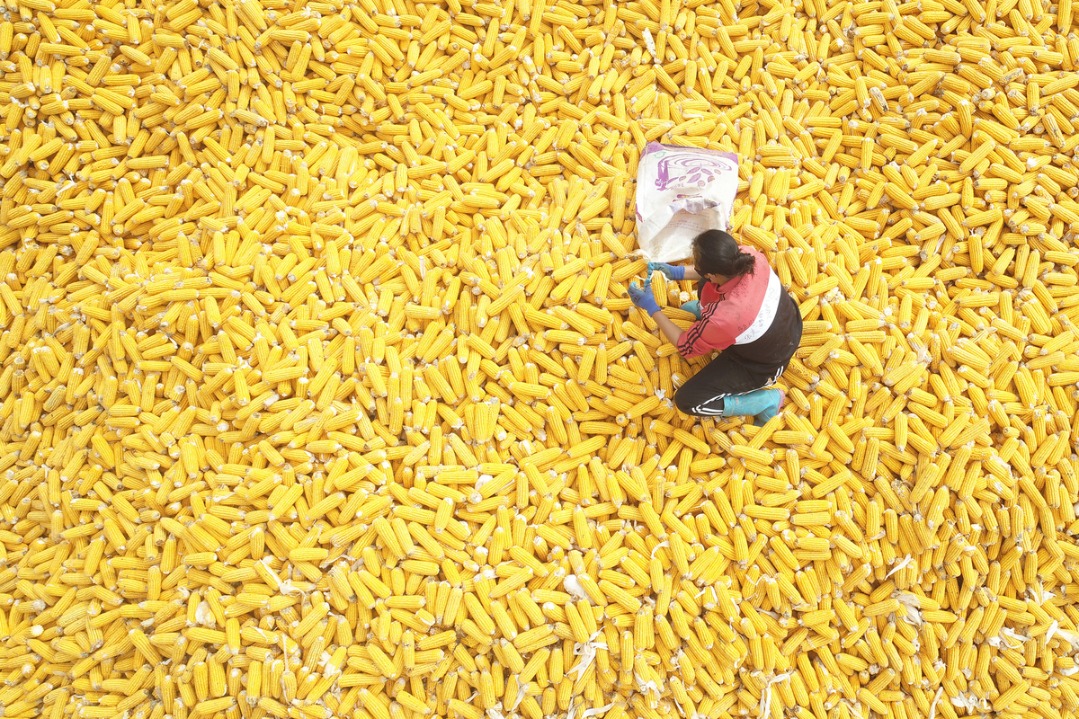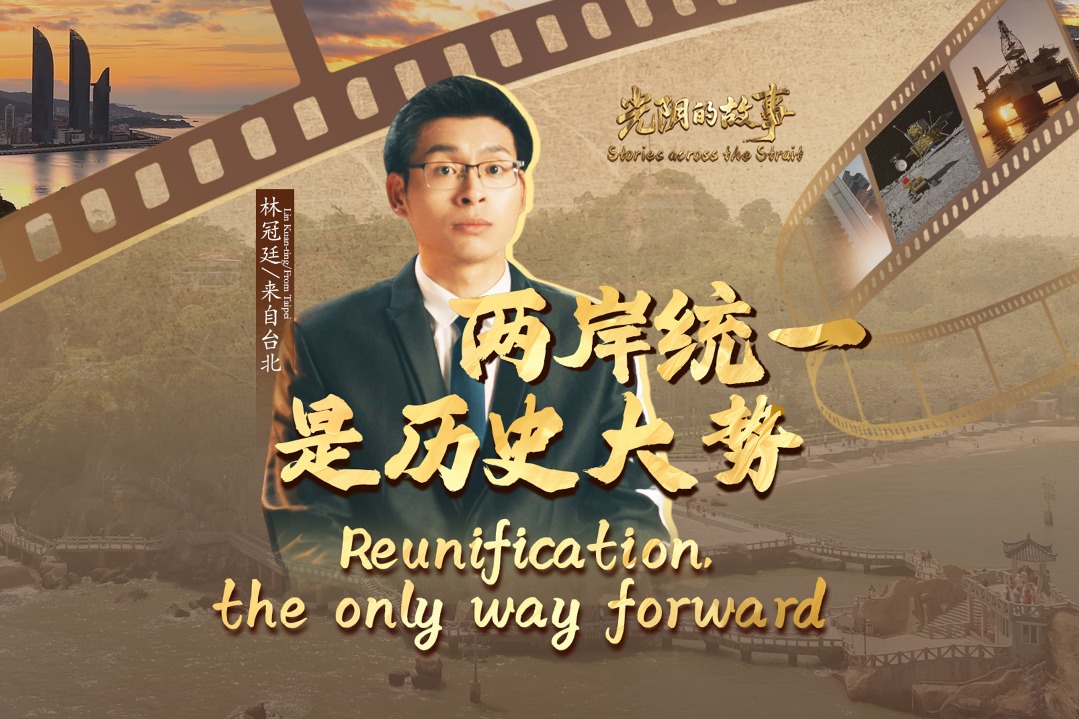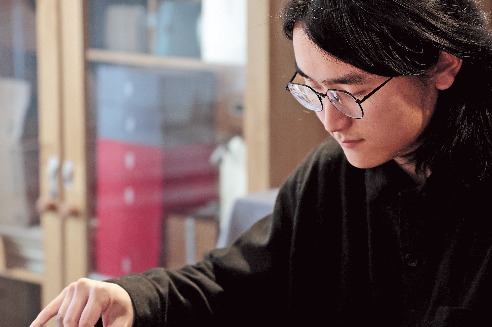Toys bring classical architecture to life


Liu Wenhui has spent the last eight years developing and promoting toy building blocks based on the mortise and tenon method at home and overseas.
In use for more than 7,000 years, mortise and tenon is one of the oldest construction methods in the world. In place of nails, it relies on interlocking joints to connect the wood together. The earliest examples have been found in Southern China's Hemudu culture and later, in Central Europe.
Born into an ordinary family in Shanxi province, the 42-year-old showed a great interest in traditional Chinese architecture from childhood.
"I was born in Fenyang, a city of quaint streets, dotted with examples of ancient architecture, such as temples, ancestral halls, brick pagodas and the ruins of city walls," he said. "So I was already familiar with traditional architecture as a boy, and I dreamed of doing something related to it in the future."
With a love for fine arts, he was admitted to the Department of Painting at Taiyuan Normal University in 2000.
After graduation, he became an interior designer at a company in Kunshan, Jiangsu province. A year later, he was assigned to Vietnam to develop the company's overseas market as a project manager.
Over the next eight years, Liu was promoted in recognition of his performance. "However, as a fine arts graduate, I still dreamed of being an artist, a painter or a craftsman," he said.
"So, I quit my job in 2012 and returned to Kunshan."
He started an art institute for children in the city and an online bookstore on e-commerce platform Taobao. "At the time, I had only one aim, to spread traditional Chinese culture and Oriental aesthetics through my humble efforts, in the hopes of raising aesthetic awareness among young people," he said.
One day at the end of 2012, he visited a museum in Shanghai and was immediately drawn to a model of an ancient Chinese building inside a glass display.
"It took me back to my childhood, but I was a little disappointed that the model couldn't be touched," he said. "Such things don't just belong in museums. More people should be able to connect with them."
- Baiyun Airport eyes greater success during next 5-year plan
- Deputy chief of China's State Tobacco Monopoly Administration under investigation
- China Coast Guard lawfully drives away Philippine vessels that illegally intrude into the waters near Tiexian Reef
- Decoding the global charm of century-old Hohai University
- China's express delivery volume tops 150 billion parcels
- Following Marco Polo





































